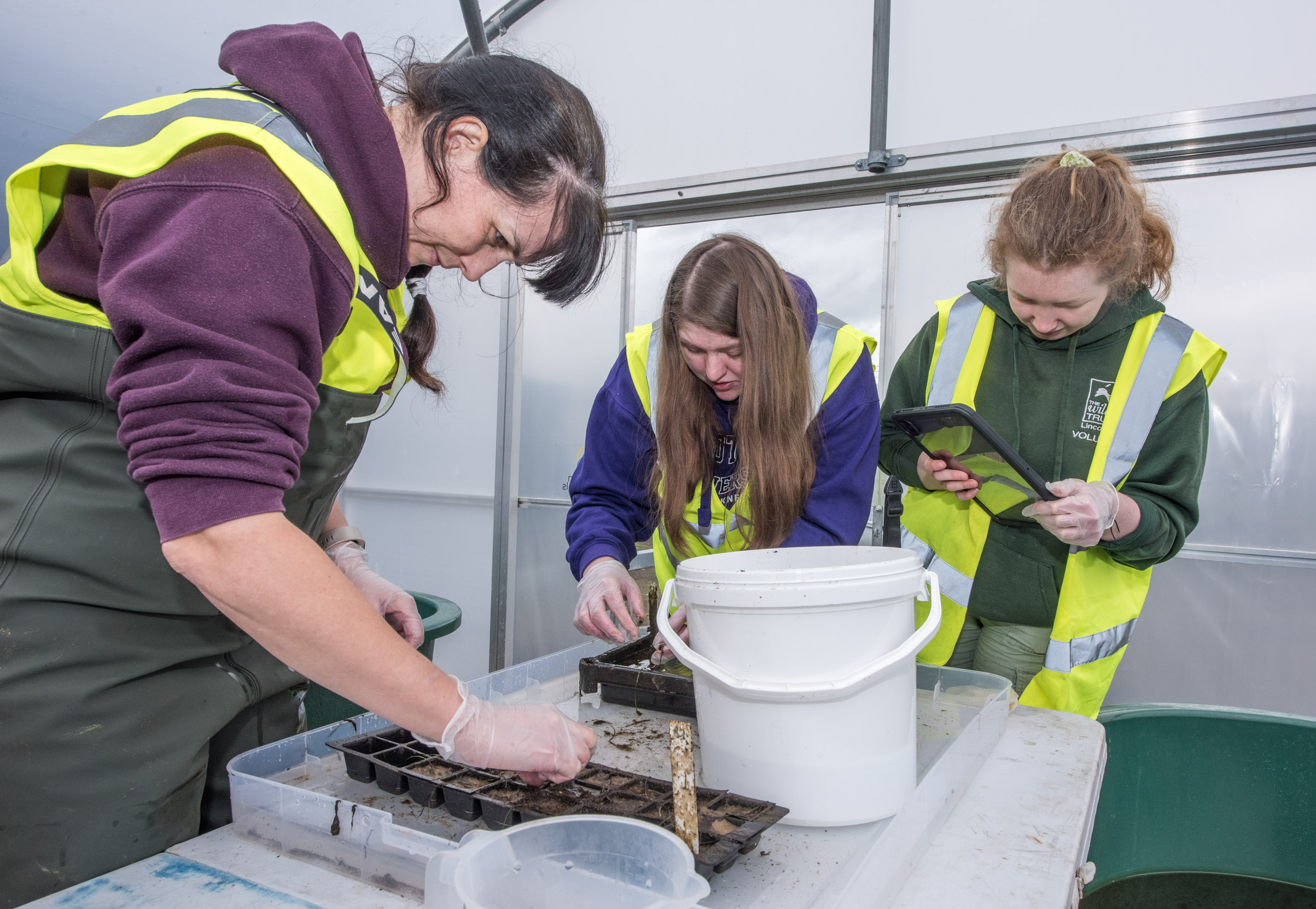Boosting Scotland's Coastline: New Seagrass Planting Initiatives

Table of Contents
The Ecological Importance of Seagrass in Scotland
Seagrass meadows are often referred to as the "lungs of the ocean," and for good reason. These underwater flowering plants play a crucial role in supporting Scotland's marine biodiversity. They provide essential habitat and nursery grounds for countless species, from commercially important fish like cod and plaice to invertebrates and juvenile seabirds. Scotland's waters support several seagrass species, including Zostera marina (common eelgrass), a key species in many coastal ecosystems.
The ecological benefits of seagrass are multifaceted:
- Carbon capture and climate change mitigation: Seagrass meadows are incredibly efficient carbon sinks, capturing and storing atmospheric carbon dioxide at a rate far exceeding that of terrestrial forests. This significantly contributes to mitigating climate change.
- Coastal protection and erosion prevention: The dense root systems of seagrass stabilize sediments, reducing coastal erosion and protecting shorelines from the impact of storms and waves. This is particularly crucial in areas vulnerable to sea-level rise.
- Supporting commercially important fish populations: Seagrass beds provide vital feeding and breeding grounds for many commercially valuable fish species, contributing to the sustainability of Scotland's fishing industry.
- Improving water quality: Seagrass acts as a natural filter, removing pollutants and improving the overall clarity and health of coastal waters.
New Seagrass Planting Projects Across Scotland
Across Scotland, exciting new seagrass planting initiatives are underway, spearheaded by a collaboration of researchers, conservation organizations, and local communities. These projects employ various methods, including seed dispersal and transplanting of seagrass shoots, to restore degraded meadows and create new ones.
Here are some examples of ongoing projects:
- Project Seagrass (various locations): This nationwide initiative focuses on large-scale seagrass restoration, utilizing cutting-edge techniques and engaging volunteers in planting and monitoring efforts.
- Seagrass Restoration Project at Loch Ryan (Dumfries and Galloway): This project aims to restore seagrass meadows in Loch Ryan, a vital area for marine life.
- The Scottish Association for Marine Science (SAMS) research projects: SAMS is actively involved in research and development of innovative seagrass restoration techniques, including exploring the use of drones for large-scale planting.
These projects are often funded through a mix of government grants, private donations, and partnerships with businesses committed to environmental sustainability. The expected outcomes include significant increases in seagrass coverage, improved water quality, and enhanced biodiversity in target areas.
Challenges and Future Directions in Scottish Seagrass Restoration
Despite the promising progress, significant challenges remain in Scottish seagrass restoration. These include:
- Pollution: Runoff from agriculture and industry introduces harmful pollutants into coastal waters, impacting seagrass health and growth.
- Dredging: Dredging activities for shipping lanes and other infrastructure can directly destroy seagrass meadows.
- Climate change: Rising sea temperatures and ocean acidification pose significant threats to seagrass survival.
Future success hinges on:
- Increased research: Further research is needed to understand the specific challenges faced by seagrass in different Scottish locations and to develop more effective restoration techniques.
- Technological advancements: The development and implementation of innovative technologies, such as drone-based planting and monitoring, will be crucial for scaling up restoration efforts.
- Community engagement: Involving local communities in monitoring and restoration activities is essential for long-term success.
How You Can Help Support Seagrass Restoration in Scotland
You can play a vital role in protecting Scotland's precious seagrass meadows. Here’s how:
- Volunteer: Many environmental organizations offer volunteer opportunities for seagrass monitoring and planting.
- Donate: Support research and restoration efforts through donations to organizations actively involved in seagrass conservation.
- Practice responsible boating and coastal recreation: Avoid anchoring or motoring in seagrass beds, and be mindful of your impact on the coastal environment.
- Spread awareness: Educate others about the importance of seagrass and the threats it faces.
Conclusion: Securing Scotland's Future through Seagrass Planting
Scotland's seagrass planting initiatives are crucial for safeguarding the health of our coastline, mitigating climate change, and supporting a thriving marine ecosystem. These ambitious projects, combined with ongoing research and community involvement, offer hope for a brighter future. By actively supporting these efforts, we can ensure that Scotland’s stunning coastline remains a vital part of our natural heritage for generations to come. Learn more about how you can contribute to Scotland's seagrass planting initiatives today!

Featured Posts
-
 Ufc 314 Volkanovski Lopes Main Event And Full Fight Card Preview
May 05, 2025
Ufc 314 Volkanovski Lopes Main Event And Full Fight Card Preview
May 05, 2025 -
 2025 Louisiana Derby Betting Odds Potential Runners And Kentucky Derby Picks
May 05, 2025
2025 Louisiana Derby Betting Odds Potential Runners And Kentucky Derby Picks
May 05, 2025 -
 Final Destination 6 Bloodline Trailer And Box Office Ranking Of The Franchise
May 05, 2025
Final Destination 6 Bloodline Trailer And Box Office Ranking Of The Franchise
May 05, 2025 -
 Simone Biles At The Kentucky Derby A Special Call To Action
May 05, 2025
Simone Biles At The Kentucky Derby A Special Call To Action
May 05, 2025 -
 Bradley Cooper Prioritizes Love Is Gigi Hadid The Reason For His Falling Out With Leonardo Di Caprio
May 05, 2025
Bradley Cooper Prioritizes Love Is Gigi Hadid The Reason For His Falling Out With Leonardo Di Caprio
May 05, 2025
Latest Posts
-
 Where To Watch The Celtics Vs Heat Game On February 10th
May 06, 2025
Where To Watch The Celtics Vs Heat Game On February 10th
May 06, 2025 -
 Nba Playoffs Game 1 Knicks Vs Celtics Your Guide To Best Bets And Predictions
May 06, 2025
Nba Playoffs Game 1 Knicks Vs Celtics Your Guide To Best Bets And Predictions
May 06, 2025 -
 Celtics Vs Knicks Prediction Playoff Game 1 Betting Analysis And Picks
May 06, 2025
Celtics Vs Knicks Prediction Playoff Game 1 Betting Analysis And Picks
May 06, 2025 -
 February 10th Celtics Heat Game Time Tv Channel And Live Stream Info
May 06, 2025
February 10th Celtics Heat Game Time Tv Channel And Live Stream Info
May 06, 2025 -
 Nba Playoffs Knicks Vs Celtics Predictions Picks And Best Bets For Game 1
May 06, 2025
Nba Playoffs Knicks Vs Celtics Predictions Picks And Best Bets For Game 1
May 06, 2025
